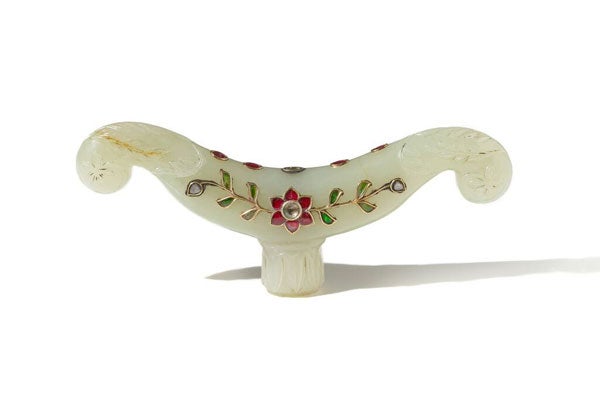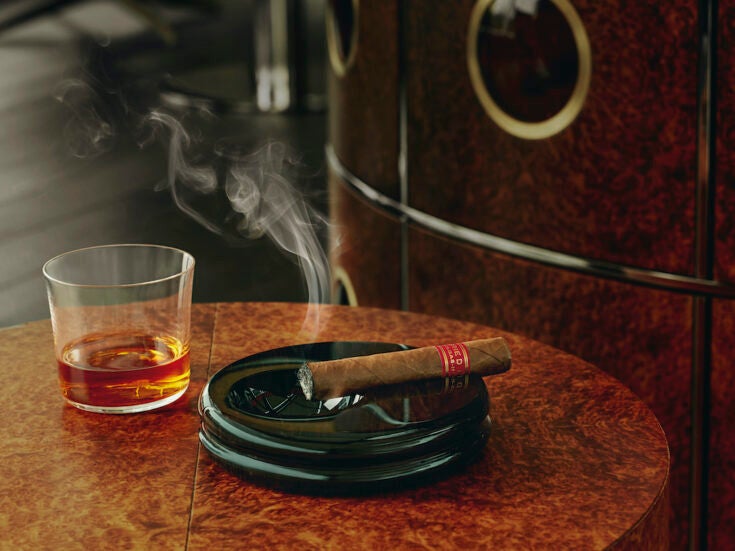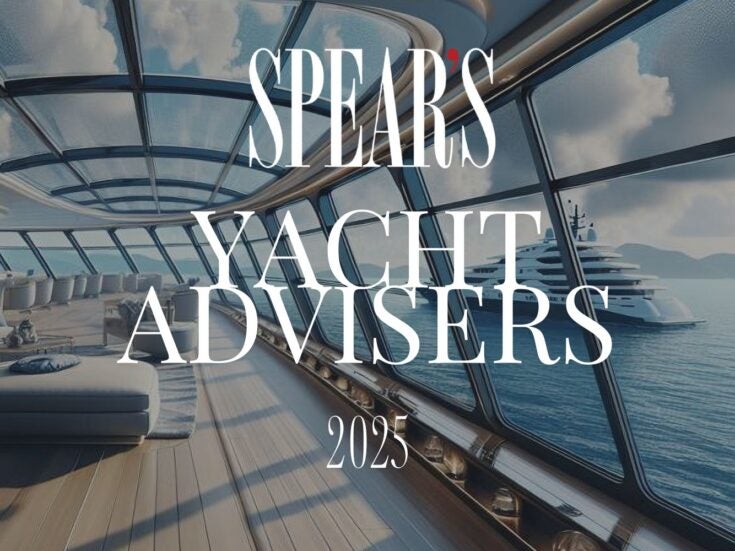
Walk through rooms which look like the inside of a jewellery box and get transported to the ‘land of the Maharajahs and their very bejewelled treasures’, says Josie Goodbody
A large selection of precious gemstones, both unmounted and set in jewellery, forms the main part of the dazzling collection that Sheikh Hamad bin Abdullah Al-Thani has amassed in the past six years, with pieces ranging from the 17th-century Mughal Empire to 20th century Cartier and the contemporary Mumbai jeweller Viren Baghat.
The Qatari prince’s formally named Al Thani Collection opened this weekend at the V&A in London, where he had first been inspired to start amassing it, on visiting the museum’s 2009 exhibition “Maharaja: The Splendour of India’s Royal Courts” and been entranced by the opulence of its objects.
Walking through a series of rooms that are aptly designed to be like the inside sections of a jewellery box, there are around 100 pieces of treasures festooned with diamonds and pearls, emeralds and rubies, sapphires and spinels, and of course the traditional technique of enamelling. This is an exceptional example of Indian jewellery at its best and its influence on leading European jewellery houses.
India was a huge marketplace for precious stones and until the discovery of South Africa’s first diamond in 1867, the main source of diamonds, most precisely from the Golconda region. One of the spectacular unmounted stones in the collection is the 17.21 carat pear-shaped Arcot II diamond from Golconda, given to Queen Charlotte in 1767 by the Nawab of Arcot.

Another is the huge 28.2 carat Agra diamond, a rectangular cut fancy intense pink which had once belonged to the Duke of Brunswick. Our present Queen has leant three important pieces from the Royal Collection including the Timur Ruby which isn’t actually a ruby at all but rather a spinel set in a brooch by Garrard in 1853 for Queen Victoria.
There are emeralds galore both loose and in jewellery. Emeralds were often engraved with petals or shaped into flower buds and hung from a string of pearls.

There is a particularly pretty emerald and diamond brooch which belonged to Anita Delgado, the Spanish fifth wife of the Maharaja of Kapurthala; the story goes that she was riding an elephant in a procession when she saw the crescent moon shaped emerald in the animal’s jewelled decorations. She was promised it on condition that she learnt to speak Urdu and received it on her 19th birthday, having it set in the brooch, with diamonds, that she often wore in her hair.
Another of the Maharani’s jewels and my favourite, is Parisian jeweller Meller’s peacock corsage or aigrette (hair ornament).

The Maharajah had bought the piece before he met his future wife, a flamenco dancer, and gave it to her at their civil wedding ceremony in Paris. The peacock ornament is made of gold, diamonds and enamel which, as the exhibition’s curator Susan Stronge says in her accompanying book, “produced a shimmer closer to that of real feathers” and decorates the body of the bird and the blue/ green tips of the sweeping gold and diamond feathered tail.
Enamelling was a characteristic of Mughal gold jewellery, brought in from Europe via Goa, along with the precious stone setting in the metal known as ‘kundan’. Instead of the usual western way of mounting a stone, the subcontinent would place the gem in the gold and apply pressure to ensure its ‘fastening’. There are several pieces of Mughal jewellery using these techniques including a selection of beautiful bracelets and pendants where the back or inside of the piece has intricate enamel designs.
Cartier has always looked far and wide for its inspiration and two particular pieces from the early twenties show its Indian influence. There is a stunning belt brooch made from emeralds, sapphires and diamonds set in platinum and gold, the centrepiece octagonal emerald is an impressive 38 carats. And a pair of emerald, diamond and ruby shoulder brooches where they have even employed the above Indian techniques.

We can’t leave an Indian event without speaking about turban ornaments and Bejewelled Treasures has several outstanding pieces. On entering the jewel box of an exhibition, the first piece you see is a 1925 diamond turban aigrette originally belonging to the Maharajah of Nawanagar.

It is 152.64 carats plus the diamond pendant at the bottom which was added by his nephew who succeeded him, the aigrette was altered from time to time by adding different rosettes to the upper section. The light white feathers add another touch of elegance to the piece. There is a modern interpretation of a turban jewel created as a special commission in 2012 by Cartier using an early twentieth century carved emerald in the centre with a plume of diamonds above it and a huge pear-shaped emerald pendant below.
Finally amongst the pieces are many nephrite jade objets, set with stones, such as several daggers with their scabbards, an eighteenth century crutch handle and even a very long elegant backscratcher, from the mid-eighteenth century, set with a ruby and an emerald!

Step into the V&A’s Indian jewellery box and you will feel transported over the seas to the far off land of the Maharajahs and their very bejewelled treasures.
Information
The exhibition runs until 28th March 2016 and is sponsored by the jewellers Wartski as part of their 150 anniversary celebration.
A book accompanying the exhibition by the curator Susan Stronge is available from the shop at £25.
Timed tickets are in operation. Advance booking is recommended.
10am – 16.30
Monday – Sunday.
Prices:
£10 Full
£8 Senior citizens
£6 Full-time students, 12 – 17 year olds, ES40 holders, disabled people
£16 /£26 Family tickets
www.vam.ac.uk
Pictures courtesy of Victoria and Albert Museum, London






